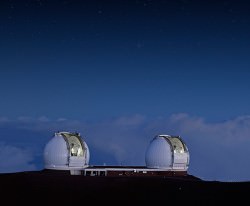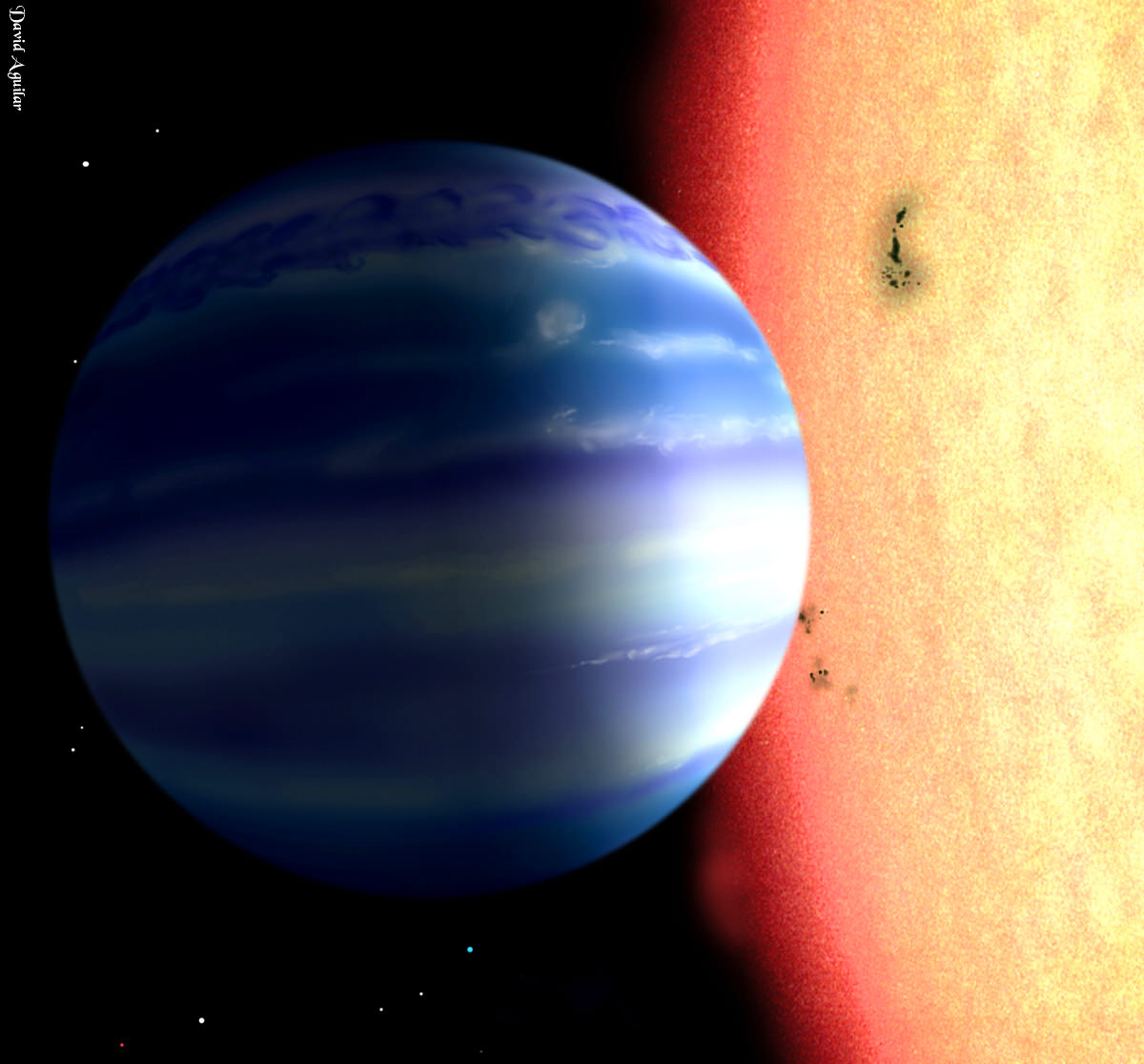As more and more exoplanets are identified and confirmed by various observational methods, the still-elusive “holy grail” is the discovery of a truly Earthlike world… one of the hallmarks of which is the presence of liquid water. And while it’s true that water has been identified in the thick atmospheres of “hot Jupiter” exoplanets before, a new technique has now been used to spot its spectral signature in yet another giant world outside our solar system — potentially paving the way for even more such discoveries.
Researchers from Caltech, Penn State University, the Naval Research Laboratory, the University of Arizona, and the Harvard-Smithsonian Center for Astrophysics have teamed up in an NSF-funded project to develop a new way to identify the presence of water in exoplanet atmospheres.
Previous methods relied on specific instances such as when the exoplanets — at this point all “hot Jupiters,” gaseous planets that orbit closely to their host stars — were in the process of transiting their stars as viewed from Earth.
This, unfortunately, is not the case for many extrasolar planets… especially ones that were not (or will not be) discovered by the transiting method used by observatories like Kepler.
Watch: Kepler’s Universe: More Planets in Our Galaxy Than Stars
So the researchers turned to another method of detecting exoplanets: radial velocity, or RV. This technique uses visible light to watch the motion of a star for the ever-so-slight wobble created by the gravitational “tug” of an orbiting planet. Doppler shifts in the star’s light indicate motion one way or another, similar to how the Doppler effect raises and lowers the pitch of a car’s horn as it passes by.

But instead of using visible wavelengths, the team dove into the infrared spectrum and, using the Near Infrared Echelle Spectrograph (NIRSPEC) at the W. M. Keck Observatory in Hawaii, determined the orbit of the relatively nearby hot Jupiter tau Boötis b… and in the process used its spectroscopy to identify water molecules in its sky.
“The information we get from the spectrograph is like listening to an orchestra performance; you hear all of the music together, but if you listen carefully, you can pick out a trumpet or a violin or a cello, and you know that those instruments are present,” said Alexandra Lockwood, graduate student at Caltech and first author of the study. “With the telescope, you see all of the light together, but the spectrograph allows you to pick out different pieces; like this wavelength of light means that there is sodium, or this one means that there’s water.”
Previous observations of tau Boötis b with the VLT in Chile had identified carbon monoxide as well as cooler high-altitude temperatures in its atmosphere.
Now, with this proven IR RV technique, the atmospheres of exoplanets that don’t happen to cross in front of their stars from our point of view can also be scrutinized for the presence of water, as well as other interesting compounds.
“We now are applying our effective new infrared technique to several other non-transiting planets orbiting stars near the Sun,” said Chad Bender, a research associate in the Penn State Department of Astronomy and Astrophysics and a co-author of the paper. “These planets are much closer to us than the nearest transiting planets, but largely have been ignored by astronomers because directly measuring their atmospheres with previously existing techniques was difficult or impossible.”
Once the next generation of high-powered telescopes are up and running — like the James Webb Space Telescope, slated to launch in 2018 — even smaller and more distant exoplanets can be observed with the IR method… perhaps helping to make the groundbreaking discovery of a planet like ours.
“While the current state of the technique cannot detect earthlike planets around stars like the Sun, with Keck it should soon be possible to study the atmospheres of the so-called ‘super-Earth’ planets being discovered around nearby low-mass stars, many of which do not transit,” said Caltech professor of cosmochemistry and planetary sciences Geoffrey Blake. “Future telescopes such as the James Webb Space Telescope and the Thirty Meter Telescope (TMT) will enable us to examine much cooler planets that are more distant from their host stars and where liquid water is more likely to exist.”
The findings are described in a paper published in the February 24, 2014 online version of The Astrophysical Journal Letters.
Read more in this Caltech news article by Jessica Stoller-Conrad.
Sources: Caltech and EurekAlert press releases.


Sooo… where is the part when “New Technique Finds Water in Exoplanet Atmospheres”?
In the links 😉
Sixth paragraph.
Forget water, the most exciting news here (at least for me) is the direct detection of the planet’s light in the spectrum, thanks to opposite doppler shifts. This beats direct imagery!